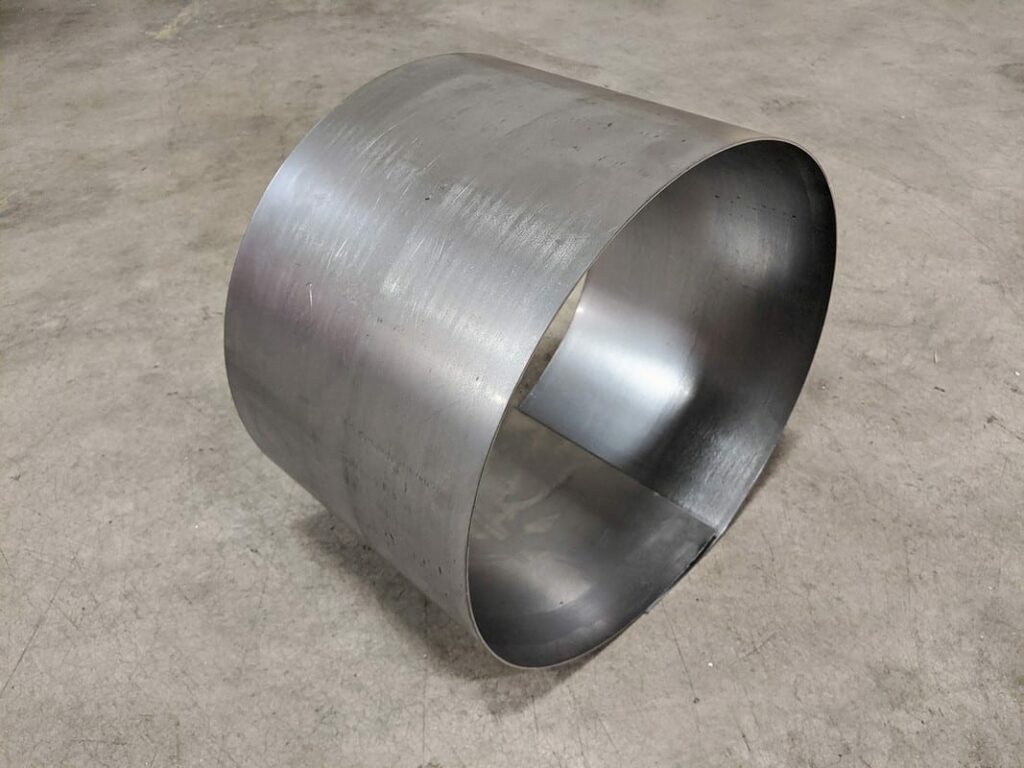Steel sheet metal: select the right material for your needs
The world of sheet metal is immense, partially because the term sheet metal can refer to so many different metal alloys. Any metal that can be formed into a thin sheet can be considered a sheet metal. We will look at the most common steel sheet metal products we use at Fuse Metal, their advantages, and disadvantages. Read on to learn about the differences in Cold Rolled Steel (CRS), Hot Rolled Steel (HRS), and Pickled and Oiled Steel (P&O).
Cold Rolled Steel (CRS)
Cold rolled steel (CRS) is the most common form of thinner sheet metal. As the name implies, it is formed, or rolled at room temperature. The resulting sheet is smooth and shiny and has no mill scale. Cold rolled steel is the best choice for applications that will be powder coated. It is a little more expensive, but because it has a clean and smooth surface, the slight cost increase is easily offset by the time saved preparing the material for finishing.
Cold rolled steel is sold in many thicknesses identified by the gauge (GA) standard. The smaller the gauge the thicker the sheet. The table below lists the most common range of CRS we use.
Common Gauges
| GAUGE (GA) | THICKNESS (INCHES) |
|---|---|
| 10 | 0.1345 |
| 11 | 0.1196 |
| 12 | 0.1046 |
| 13 | 0.0897 |
| 14 | 0.0747 |
| 15 | 0.0673 |
| 16 | 0.0598 |
| 17 | 0.0538 |
| 18 | 0.0478 |
| 19 | 0.0418 |
| 20 | 0.0359 |
| 21 | 0.0329 |
| 22 | 0.0299 |
Hot Rolled Steel (HRS)

Hot rolled steel (HRS) is steel that has been formed at high temperature. It often has a scaled surface, which is a result of when the steel cools from the high temperature it was formed under. HRS is a little less expensive than CRS and is perfect for use in structural applications.
If surface appearance is important, we can remove the mill scale by media blasting (sand blasting) or grinding. We typically stock HRS in A36 grade from 3/16” up to ½”.
Pickled & Oiled Steel
Pickled and oiled (P&O) steel is hot rolled steel (HRS) that has been through a surface metal treatment process to remove rust and mill scale. The pickling and oiling process is an economical way to improve the surface quality of the plate steel.
Fuse Metal often suggests P&O A36 steel for use in ascetically important applications. We generally stock 3/16”, ¼” and 3/8” pickled and oiled A36, and can special order many different sizes.
Making the most economical choices
There are many design considerations when value engineering a sheet metal part or weldment. There are material cost and process variables that must all be considered in the total cost of any project.
Our team of design engineers and estimators are available to help review your project and make recommendations to reduce total project cost by evaluating all these variables. Please contact us if we can help with your project.
